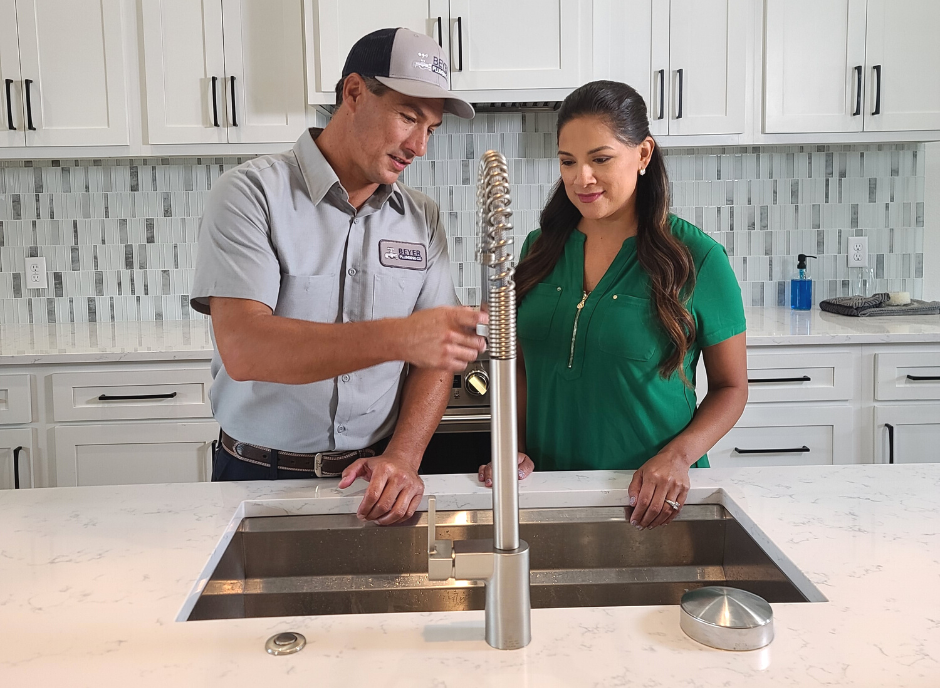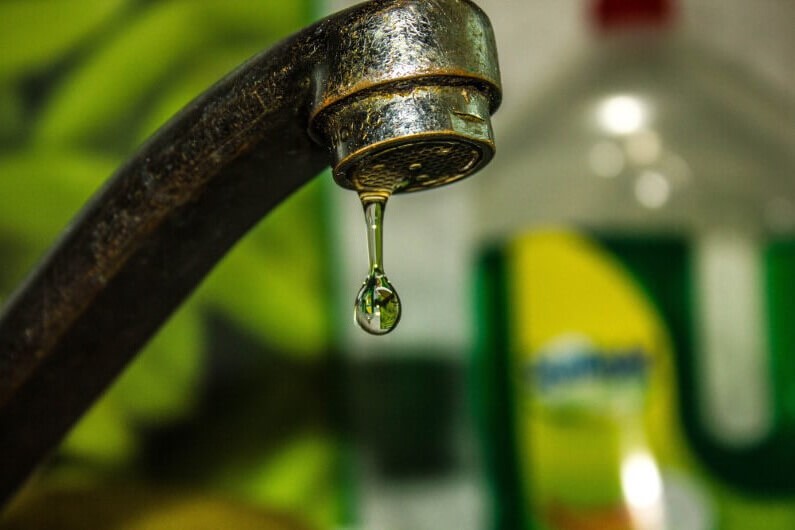What It's Vital to Repair a Broken Faucet
What It's Vital to Repair a Broken Faucet
Blog Article
Listed here below you can get lots of reliable content in regards to Why Are My Faucets Dripping (And Can I Fix It Myself)?.

Dripping faucets could feel like a minor aggravation, yet their effect goes beyond just the aggravation of the sound. From wasting water to incurring unnecessary monetary costs and health and wellness risks, disregarding a leaking tap can lead to various effects. In this post, we'll look into why it's vital to address this common family concern immediately and successfully.
Waste of Water
Environmental Impact
Trickling faucets add dramatically to water wastefulness. According to the Epa (EPA), a solitary tap trickling at one drip per second can throw away more than 3,000 gallons of water annually. This not just strains water resources yet additionally affects ecological communities and wildlife based on them.
Step-by-Step Overview to Fixing a Dripping Faucet
Devices Required
Before trying to take care of a trickling tap, collect the required tools, consisting of an adjustable wrench, screwdrivers, substitute components (such as washing machines or cartridges), and plumber's tape.
Typical Faucet Issues and Their Solutions
Recognize the kind of tap and the specific issue triggering the drip. Common troubles consist of damaged washers, corroded valve seats, or defective O-rings. Refer to maker guidelines or on-line tutorials for step-by-step guidance on repair work.
Financial Expenses
Boosted Water Expenses
Beyond the environmental effect, leaking faucets can pump up water bills substantially. The accumulated wastage with time converts into higher energy costs, which could have been avoided with timely fixings.
Potential Residential Or Commercial Property Damage
Moreover, prolonged dripping can result in damage to components and surfaces surrounding the faucet. Water build-up can cause discoloration, rust, and even architectural issues if left neglected, causing added repair service expenses.
Health Worries
Mold and Mold Development
The continuous presence of dampness from a dripping tap develops an excellent atmosphere for mold and mildew and mildew growth. These fungi not just compromise indoor air quality yet also present wellness threats, particularly for people with respiratory system problems or allergic reactions.
Waterborne Illness
Stagnant water in leaking faucets can come to be a breeding place for germs and other virus, boosting the danger of waterborne illness. Contaminants such as Legionella germs thrive in stagnant water, possibly leading to serious ailments when ingested or inhaled.
Do it yourself vs. Professional Repair work
Benefits and drawbacks of DIY Repair Work
While some may attempt to take care of a trickling faucet themselves, do it yourself repairs come with their own set of obstacles. Without proper understanding and devices, do it yourself efforts can intensify the concern or result in insufficient repair work, prolonging the problem.
Benefits of Hiring a Professional Plumber
Working with a specialist plumber makes certain that the underlying root cause of the trickling tap is addressed effectively. Plumbings possess the experience and equipment to diagnose and repair faucet concerns successfully, saving time and decreasing the danger of more damages.
Environmental Duty
Specific Contribution to Conservation
Taking obligation for repairing dripping taps aligns with more comprehensive initiatives toward water preservation and environmental sustainability. Every person's actions jointly make a substantial impact on protecting valuable sources.
Sustainable Living Practices
By focusing on prompt repair services and taking on water-saving routines, people add to lasting living techniques that profit both existing and future generations.
Safety nets
Regular Maintenance Tips
To prevent trickling faucets, do routine maintenance such as cleansing aerators, checking for leakages, and replacing damaged parts promptly. Furthermore, consider installing water-saving gadgets or updating to extra efficient fixtures.
Significance of Prompt Services
Dealing with trickling taps as soon as they're observed avoids additional water waste and prospective damage, inevitably saving both water and money in the future.
Impact on Property Value
Assumption of Well-Maintained Property
Preserving a home in good condition, including addressing maintenance concerns like dripping taps, boosts its viewed worth and desirability amongst possible customers or renters.
Influence on Resale Worth
Features with well-kept plumbing components, including faucets, command greater resale values in the realty market. Resolving dripping taps can contribute to a favorable impression throughout building inspections and arrangements.
Verdict
Resolving a leaking tap exceeds mere benefit; it's an essential action toward saving water, minimizing financial costs, and protecting health and wellness and building. Whether through DIY repair work or expert support, acting to take care of trickling taps is a tiny yet impactful way to advertise responsible stewardship of sources and contribute to a much healthier, more lasting future.
How to Fix a Dripping or Leaky Faucet
A leaking faucet is one of the most common problems that homeowners encounter, but it being commonplace doesn’t make it any less annoying. The constant drip drip drip of a leaking bathtub faucet, showerhead, or sink tap can disturb your home’s serenity. Left neglected, a dripping faucet can also result in higher water bills and discoloration or mold growth in your sink or plumbing fixtures.
Fortunately, you don’t have to be a trained plumber to know how to stop a dripping faucet. With some basic tools, replacement parts, and a little patience, leaky faucet repair is a breeze. In this article, we’ll explain what causes dripping faucets and how you can fix them.
What Causes a Leaking Faucet?
Kitchen and bathroom faucets come in all manner of designs, but most involve some combination of valves, O-rings, seals, and washers. The O-ring is usually the weakest link, but any one of these pieces can wear down over time. Heat, moisture, temperature fluctuations, minerals, mold, and movement can contribute to warping and corrosion, breaking the watertight seal. This just comes with the territory of being a homeowner. Everything is always subject to wear and tear, and some component parts of your appliances and fixtures need to be replaced on occasion. At least replacement O-rings are cheap!
More rarely, dripping faucets can be a symptom of excessively high water pressure. Were this the case in your home, you would probably notice that the leak is not isolated to one faucet. Water pressure issues are harder to resolve on your own. We recommend contacting a professional plumber if you suspect your water pressure is too high.
How to Fix a Dripping Faucet
Pipe wrench or monkey wrench Allen wrench set Screwdrivers Old towel or rag Shut off the water.
Before you do anything, you need to turn off the water to keep from drenching your kitchen or bathroom. You should find a valve under the sink and against the wall. Once you’ve turned this valve, try turning the faucet on to confirm that the water source has been cut off.
If you can’t locate your local valve for the faucet you’re working on, you can always shut off the water to the house at the main valve. Of course, this will prohibit anyone from using the sinks, showers, or toilets while you’re working on the faucet that’s giving you trouble.
Plug or block the drain.
You’ll be disassembling the faucet and removing some small bits of hardware. Plug the drain with a stopper or rag to avoid the possibility of a small screw falling into your P-trap.
Take apart the faucet assembly.
There are several varieties of kitchen and bathroom faucets, each with its own manner of assembly. For detailed instructions on how to disassemble your faucet, you can refer to the fixture’s manual or contact the manufacturer. If you know whether you have a ball, disc, cartridge, or compression faucet, you can find detailed schematics online.
In general, you need to begin by removing the faucet handles. You might notice a small screw that you’ll need to remove with a screwdriver or Allen wrench. If you don’t see any visible securing hardware, it’s likely hidden under a decorative cap that can be unscrewed or popped off with flathead screwdriver.
Remove each piece methodically, consulting a schematic when necessary. Take notes or arrange the pieces in such a way to make it easier to correctly reassemble the faucet later.
Remove the cartridge.
Once you’ve removed the handles and securing hardware, you should be able to remove the valve cartridge or stem. Some cartridges will slide right out. Other faucet models will require you to loosen a nut with a pipe wrench before you can remove the valve stem.
Examine the exposed hardware.
With the cartridge or stem removed, inspect the component parts. Check the rubber O-rings for wear and tear. Also examine the seat washer for corrosion or other damage. These pieces are usually the responsible parties for a dripping faucet, but it’s worth inspecting the other component parts while you have the faucet disassembled.
Find replacement parts.
Once you’ve identified which faucet component has failed, find an identical replacement. Your local hardware store should have O-rings, seat washers, and other standard components in stock. If you have a luxury or uncommon faucet, you may have to contact the manufacturer for a replacement part.
It’s a good idea to take your old parts with you to the hardware store so you can compare them with the store’s inventory and be sure you’re purchasing the correct replacement.
Reassemble the faucet.
With your new parts in hand, reconstruct the faucet and handles. Don’t be tempted to overtighten screws or nuts. You might think this could create a better seal, but it can instead damage or bend a delicate part of the assembly and create a new problem for you.
Turn on the water and test the faucet.
The only thing left to do is test your work. Unplug the sink, turn the water back on, and try the faucet. Congratulate yourself on a job well done!
https://www.libertyhomeguard.com/how-to-fix-a-dripping-or-leaky-faucet/

Do you like reading up on Should I Repair or Replace a Leaky Faucet?? Leave feedback further down. We will be pleased to listen to your thoughts about this blog posting. In hopes that you visit us again in the near future. Are you aware of anybody else who is fascinated about the subject? Be sure promote it. Thank you for being here. Come back soon.
Report this page